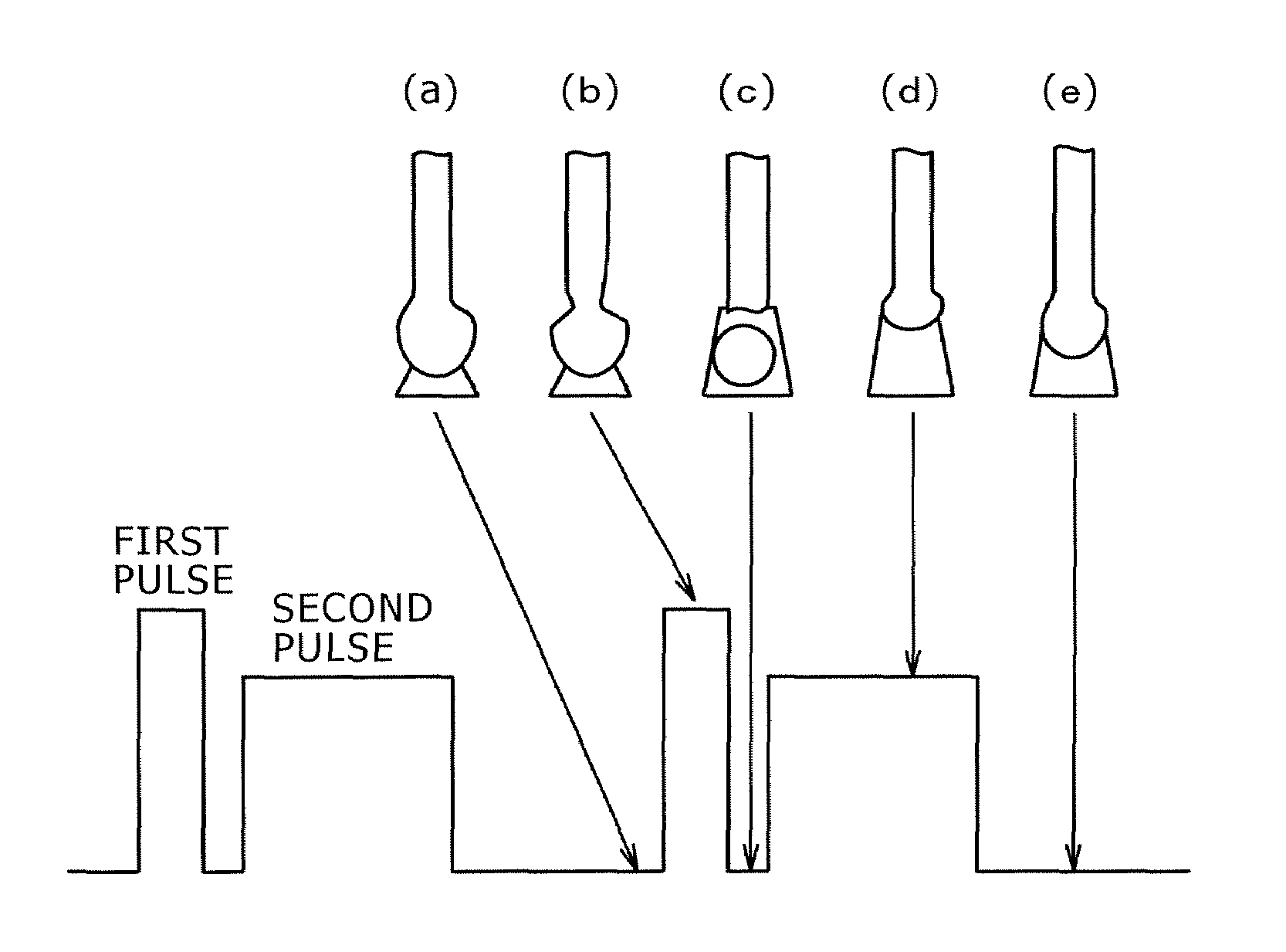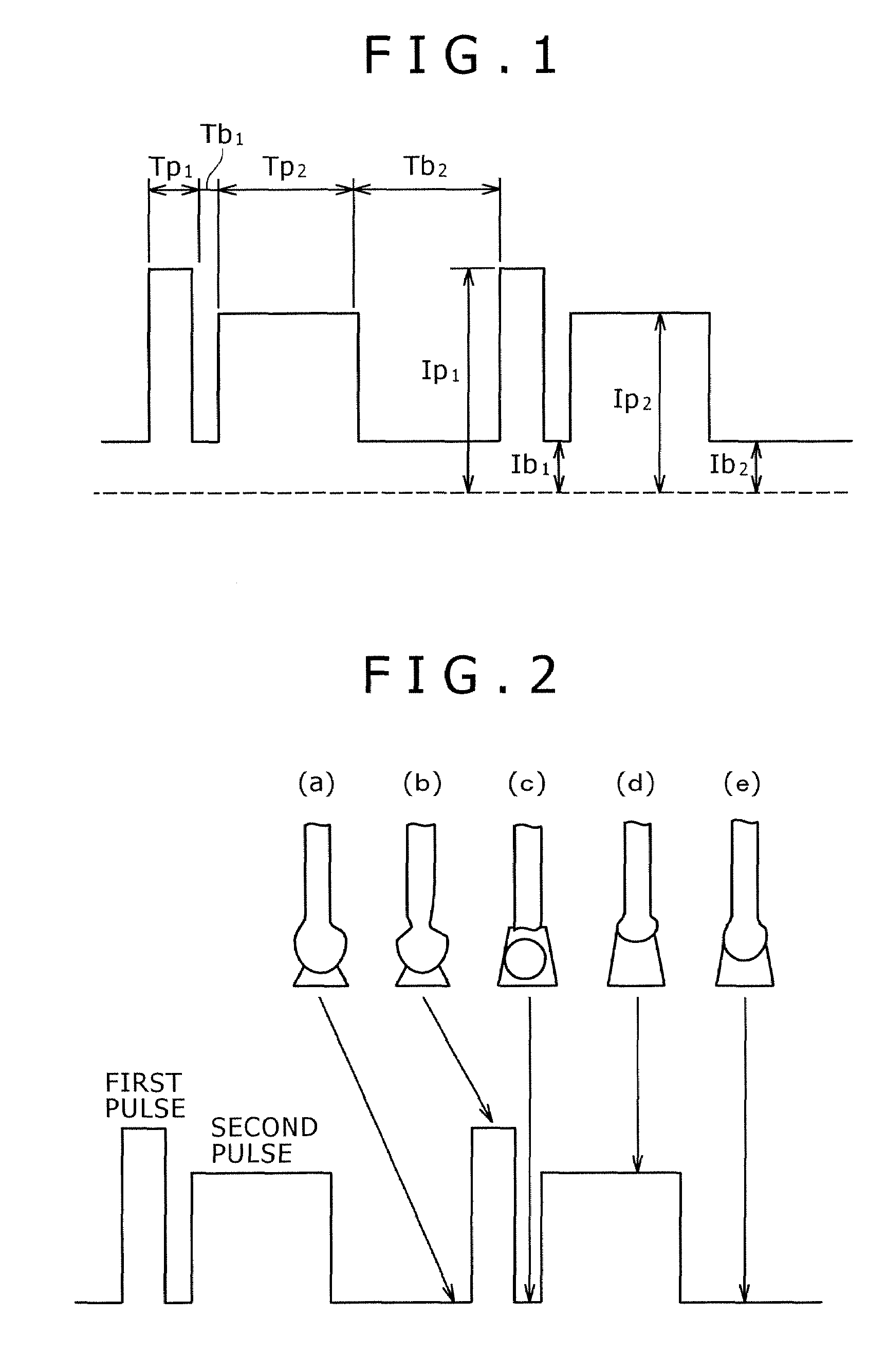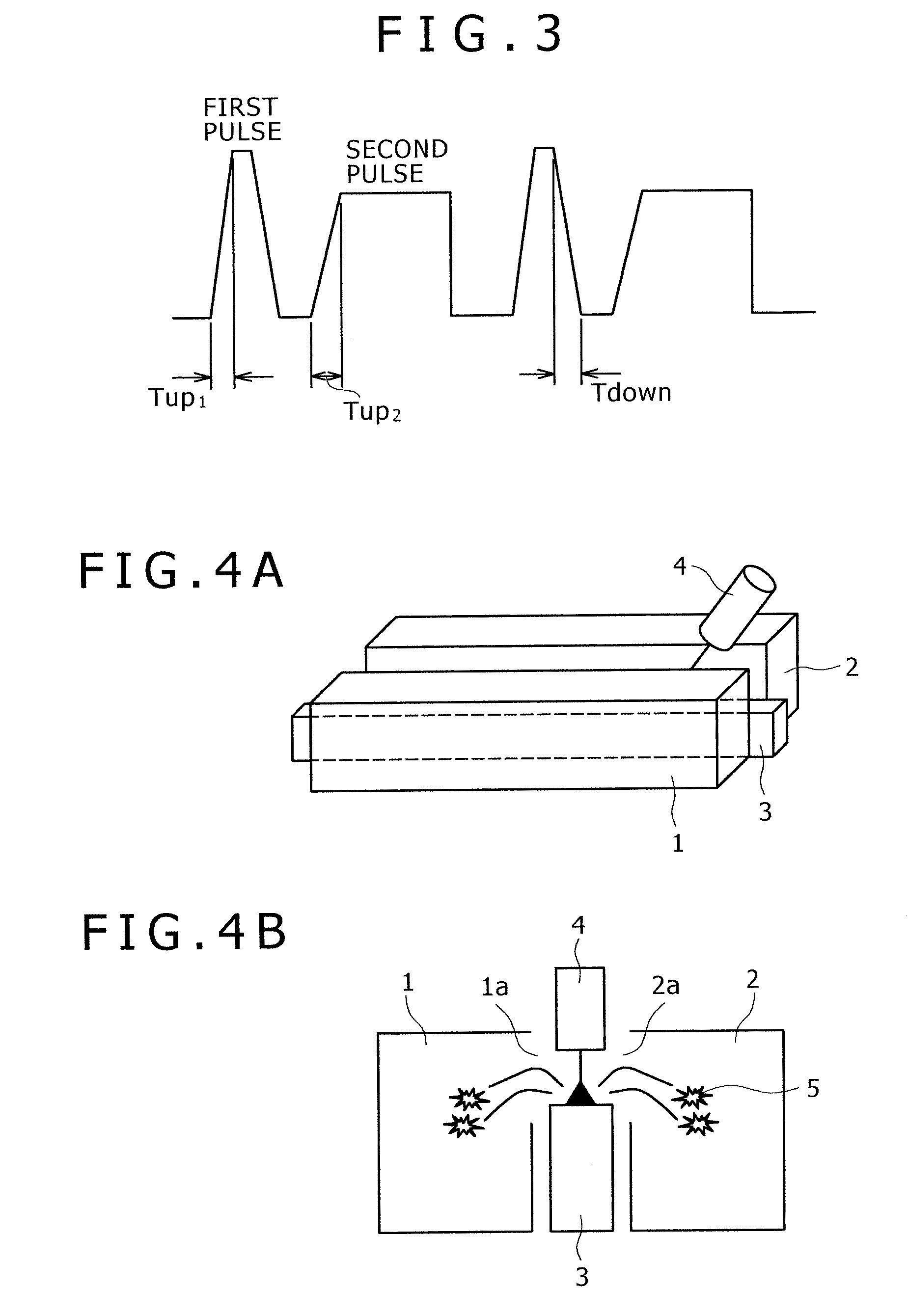Pulsed arc welding method
a welding method and arc welding technology, applied in the direction of arc welding apparatus, welding apparatus, manufacturing tools, etc., can solve the problems of excessive generation of spatters and fumes, high cost of arc gas, irregular droplet transfer, etc., and achieve the effect of improving the stability of the welding arc, reducing the generation rate of fumes, and facilitating maintenan
- Summary
- Abstract
- Description
- Claims
- Application Information
AI Technical Summary
Benefits of technology
Problems solved by technology
Method used
Image
Examples
examples
[0080]Hereinafter, examples of the first embodiment of the present invention are explained. Using the welding conditions indicated below and pulse parameter values indicated in Table 1 and Table 2, pulsed arc welding was carried out using carbon dioxide gas as a shield gas to measure a generation rate of spatters. More particularly, spatters were collected by carrying out a welding process inside a copper collector box as shown in FIGS. 4A and 4B. FIG. 4A is its perspective view and FIG. 4B is its schematic cross-sectional view. To carry out the welding process, a welding base metal 3 was sandwiched between the copper collector boxes 1 and 2, and a torch 4 was disposed on the welding base metal 3. Spatters 5 generated from welding were then guided into the collector boxes 1 and 2 through passages 1a and 2a prepared on the upper portion of each of the collector boxes 1 and 2.
[0081]Welding Conditions
[0082]Wire: YGW 11 with a diameter of 1.2 mm of JIS Z3312
[0083]Shield gas: CO2 alone
[0...
PUM
| Property | Measurement | Unit |
|---|---|---|
| peak current | aaaaa | aaaaa |
| current | aaaaa | aaaaa |
| current | aaaaa | aaaaa |
Abstract
Description
Claims
Application Information
 Login to View More
Login to View More - R&D
- Intellectual Property
- Life Sciences
- Materials
- Tech Scout
- Unparalleled Data Quality
- Higher Quality Content
- 60% Fewer Hallucinations
Browse by: Latest US Patents, China's latest patents, Technical Efficacy Thesaurus, Application Domain, Technology Topic, Popular Technical Reports.
© 2025 PatSnap. All rights reserved.Legal|Privacy policy|Modern Slavery Act Transparency Statement|Sitemap|About US| Contact US: help@patsnap.com



